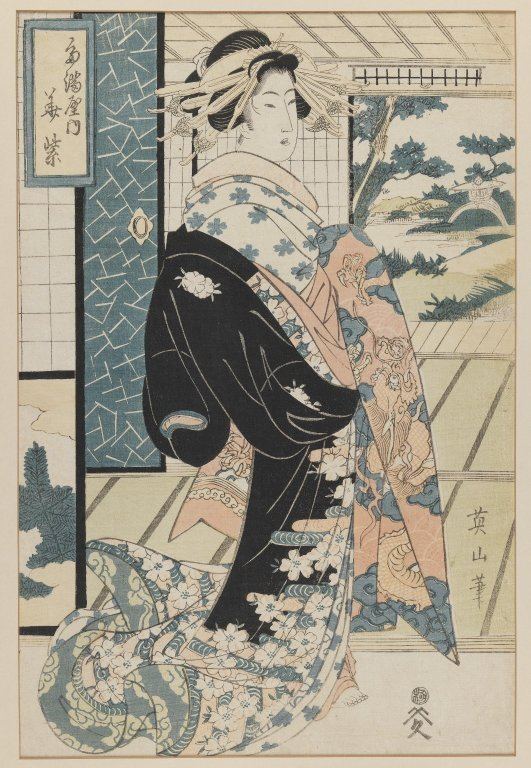 | ||
Bijin (美人) is a Japanese term which literally means "a beautiful person". In that it originally derives from Chinese word 美人, the word 美人 is used widely in several Asian countries concluding China, South Korea, North Korea, Vietnam.
Contents
Meaning
However, in practice this term means "beautiful woman" because of kanji character bi (美) which has a feminine connotation.
Bijin can also simply mean "(a) beauty"; in a modern and informal context it means "a doll". Bijins are usually beautiful, charming and harmonious women, who wear pretty clothes.
In Mandarin Chinese, 美人 (Pinyin: měirén) also means "a beautiful woman". Like Mandarin Chinese, in Korean language, 美人(Hangul: 미인; RR: Miin) means "a beautiful woman".
Bijin in Japanese art
Pictures of bijins in Japanese art are called bijinga. Bijinga is described as a genre of ukiyo-e paintings.
Some of the greatest bijinga artists are Utamaro, Suzuki Harunobu and Torii Kiyonaga.
Until the beginning of the 20th century, bijinga was really popular.
Famous bijin women
Akita, located on Honshu, in northern Japan, is famous for its "bijins of Akita" which are characterized by their round face, clear skin and high-pitched voice.
Ono no Komachi, one of the Thirty-six Immortals of Poetry, was a beauty from Akita.
Fukuoka, the largest city of Kyushu island in southern Japan, is also known for a large population of bijins.
Some of Utamaro's favourite models have remained bijin famous; for example Naniwaya Okita (fr), a courtesan Hanaōgi (fr), Tomimoto Toyohina (fr) and Takashima Ohisa.
